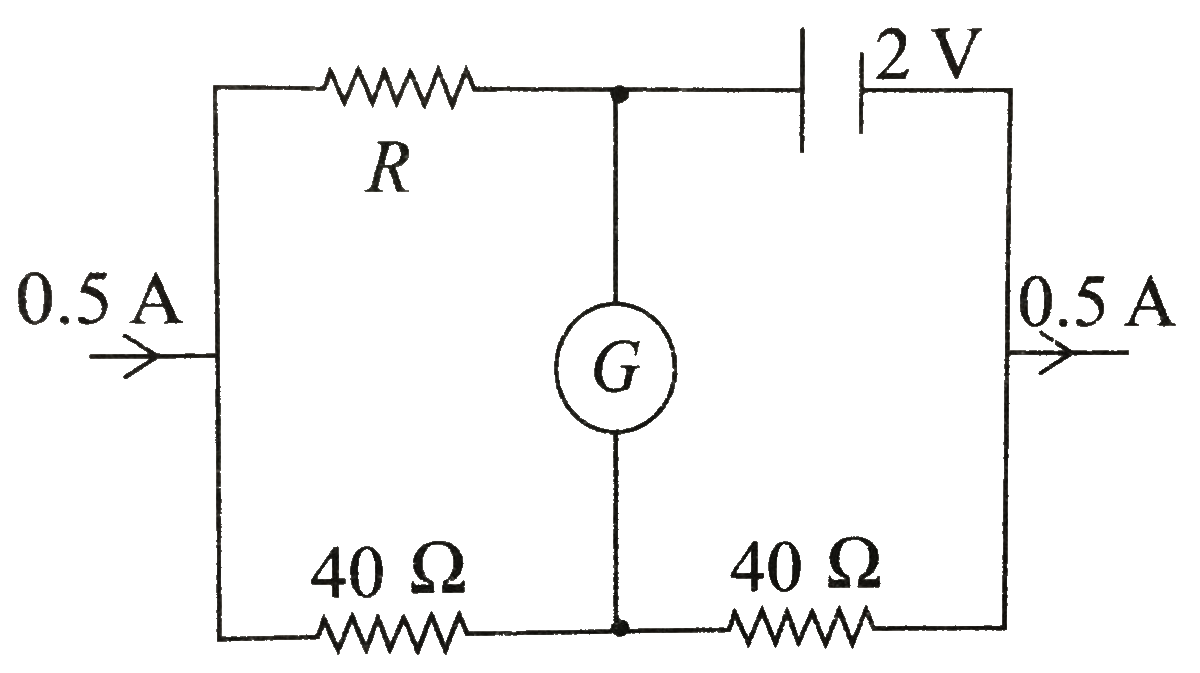A potentiometer is an accurate and versatile device to make electrical measurements of E.M.F. because the method involves
(a) cells
(b) potential gradients
(c) a condition of no current flow through the galvanometer
(d) a combination of cells, galvanometer and resistance
cells
potential gradients
a condition of no current flow through the galvanometer
a combination of cells, galvanometer and resistance
The correct Answer is:C
To solve the question regarding why a potentiometer is an accurate and versatile device for measuring EMF, we can analyze the options provided and determine the most appropriate answer.
1. Understanding the Potentiometer:
A potentiometer is a device used to measure the electromotive force (EMF) of a cell or the potential difference between two points in an electric circuit without drawing any current from the circuit.
Hint: Remember that a potentiometer is used for measuring potential differences and EMF.
2. Analyzing the Options:
- (a) Cells: While cells are part of the setup, they do not explain why the potentiometer is accurate.
- (b) Potential Gradients: This refers to the change in potential over a distance but does not directly address the accuracy of EMF measurement.
- (c) A condition of no current flow through the galvanometer: This is a key feature of the potentiometer. It ensures that the measurement does not affect the circuit, leading to accurate readings.
- (d) A combination of cells, galvanometer, and resistance: This describes the components of a potentiometer but does not explain why it is accurate.
3. Identifying the Correct Answer:
The most significant reason for the potentiometer's accuracy in measuring EMF is that it operates under the condition of no current flow through the galvanometer. This condition allows for precise measurements without affecting the circuit.
Therefore, the correct answer is (c) a condition of no current flow through the galvanometer.
Final Answer:
The correct answer is (c) a condition of no current flow through the galvanometer.
A potentiometer is a device used to measure the electromotive force (EMF) of a cell or the potential difference between two points in an electric circuit without drawing any current from the circuit.
- (a) Cells: While cells are part of the setup, they do not explain why the potentiometer is accurate.
- (b) Potential Gradients: This refers to the change in potential over a distance but does not directly address the accuracy of EMF measurement.
- (c) A condition of no current flow through the galvanometer: This is a key feature of the potentiometer. It ensures that the measurement does not affect the circuit, leading to accurate readings.
- (d) A combination of cells, galvanometer, and resistance: This describes the components of a potentiometer but does not explain why it is accurate.
The most significant reason for the potentiometer's accuracy in measuring EMF is that it operates under the condition of no current flow through the galvanometer. This condition allows for precise measurements without affecting the circuit.
The correct answer is (c) a condition of no current flow through the galvanometer.
Similar Questions
Assertion: Potentiometer measures correct value of emf of a cell.
Reason: No current flows through cell at null point of potentiometer.
View SolutionIn the circuit shows in Fig. 6.74, the internal resistance of the cell is negligible. For the value of R=40/xΩ, no current flows through the galvanometer. What is x?

View SolutionA 10 m long potentiometer wire carries a steady current. A standard cell of emf 1.018 V is balanced against a length of 254.5 cm of the wire. What is the potential gradient across the potentiometer wire ?
View SolutionA student measures the terminal potential difference (V) of a cell (of emf ε and internal resistance r) as a function of the current (I) flowing through it. The slope and intercept of the graph between V and I, then respectively, equal
View SolutionPrimary circuit of potentiometer is shown in figure determine :
(A) current in peimary circuit
(B) potential drop across potentiometer wire AB
( C) potential gradient (means potential drop per unit length of potentiometer wire)
(D) maximum potential which we can measure above potentiometer

View SolutionAssertion: When wheatstone bridge is balanced then current through cell depends on resistance of galvanometer.
Reason: At balancec condition current through galvanometer is very high.
View SolutionIn an experiment to measure the membrane potential of a living plant cell micro-electrodes are placed inside and outside the cell. The membrane potential is measured to be 120 mV and a current of 1.5 nA flows through the membrane .Assume that the current density in the cell is uniform.
The total area of the cell membrane is 2.0mm2 and its thickness is 12 μm.
(a) What is the current density in the membrane?
(b) What is the resistivity of the membrane ?
View Solution(a) A current of 1A flows in a series curcuit containing an electric lamp and a conductor of 5Ω when connected to a 10V battery. Calculate the resistance of the electric lamp.
(b) Now if a resistance of 10Ω is connected in parallel with this series combination, what change (if any) in current flowing through 5Ω conductor and potential difference across the lamp will take place ? Give reason.
View SolutionThe wire of potentiometer has resistance 4Ω and length 1m. It is connected to a cell of e.m.f. 2V and internal resistance 1Ω. The current flowing through the potentiometer wire is
View SolutionPotential difference across terminal sof a cell were measured ( in volts) against different currents ( in ampere) flowing through cell. A graph ABC is drawn as shown. Determine
(a) The emf.
(b) Internal resistance of cell
View Solution
